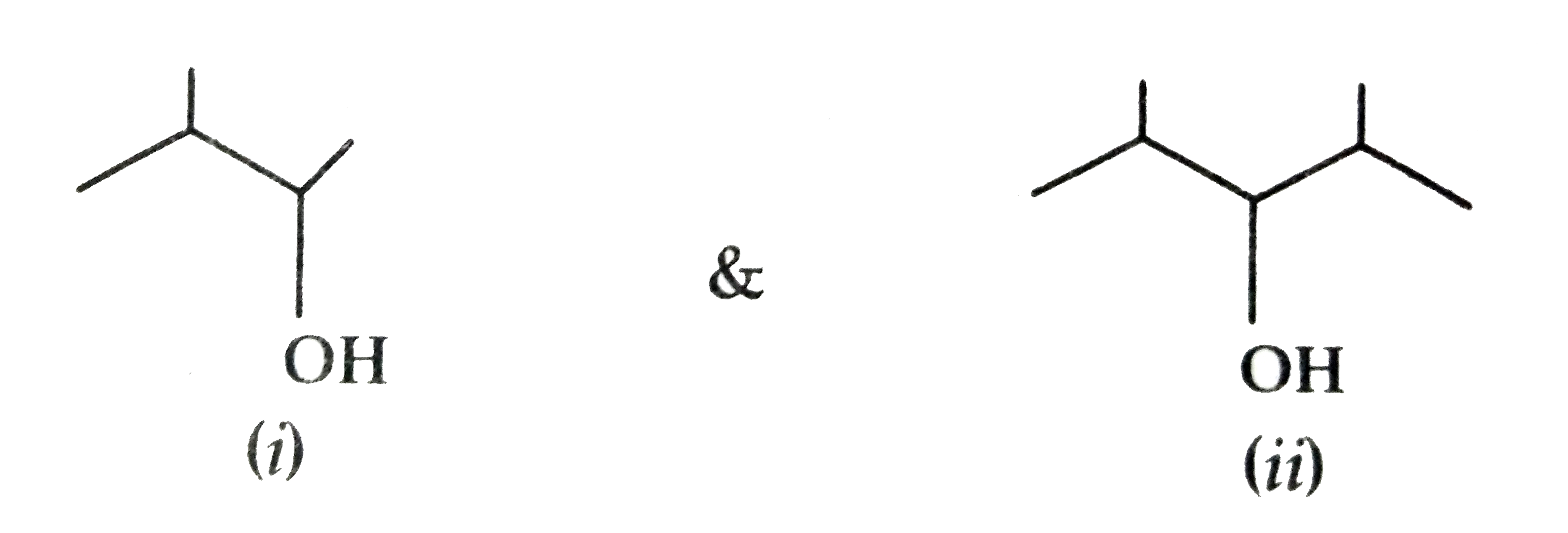Write the structure of the alkene formed by dehydrohalogenation of I-bromo methyl cyclohexane with alcholie KOH
To solve the question about the structure of the alkene formed by the dehydrohalogenation of 1-bromomethyl cyclohexane with alcoholic KOH, we will follow these steps:
Step 1: Understand the Structure of 1-Bromomethyl Cyclohexane
1-bromomethyl cyclohexane consists of a cyclohexane ring with a bromomethyl group (-CH2Br) attached to one of the carbon atoms in the ring. The structure can be represented as follows:
Br∣C6H11−CH2
Step 2: Identify the Reaction Type
Dehydrohalogenation is a reaction where a hydrogen atom and a halogen atom (in this case, bromine) are removed from the molecule. This reaction typically occurs in the presence of a strong base, such as alcoholic KOH.
Step 3: Mechanism of Dehydrohalogenation
In the presence of alcoholic KOH, the base will abstract a hydrogen atom from the carbon adjacent to the carbon bonded to the bromine. This results in the formation of a double bond between the two carbons, and the bromine is eliminated as a bromide ion (Br⁻).
Step 4: Determine the Alkene Product
For 1-bromomethyl cyclohexane, the hydrogen atom that will be removed is from the carbon adjacent to the carbon bearing the bromine. The resulting structure will have a double bond between the carbon that was attached to the bromine and the adjacent carbon.
The alkene formed from this reaction can be represented as follows:
CH2∣∣C6H10−CH
This structure represents the alkene formed after the dehydrohalogenation reaction.
Final Structure of the Alkene
The final structure of the alkene formed is:
CH2∣C6H10=C
1-bromomethyl cyclohexane consists of a cyclohexane ring with a bromomethyl group (-CH2Br) attached to one of the carbon atoms in the ring. The structure can be represented as follows:
Dehydrohalogenation is a reaction where a hydrogen atom and a halogen atom (in this case, bromine) are removed from the molecule. This reaction typically occurs in the presence of a strong base, such as alcoholic KOH.
In the presence of alcoholic KOH, the base will abstract a hydrogen atom from the carbon adjacent to the carbon bonded to the bromine. This results in the formation of a double bond between the two carbons, and the bromine is eliminated as a bromide ion (Br⁻).
For 1-bromomethyl cyclohexane, the hydrogen atom that will be removed is from the carbon adjacent to the carbon bearing the bromine. The resulting structure will have a double bond between the carbon that was attached to the bromine and the adjacent carbon.
The final structure of the alkene formed is:
Topper's Solved these Questions
Similar Questions
Write the structure of the alkene formed by dehydrohalogenation of 1-bromo-1methylcyclohexane with alcoholic KOH.
View Solution(a) Identify the chiral molecule in the following pair :

(b) Write the structure of the product when chlorobenzene is treated with methyl chloride in the presence of sodium metal and dry ether .
(c) Write the structure of the alkene formed by dehydrohalogenation of 1-bromo-1-methylcyclohexane with alcoholic KOH.View SolutionWrite the structure of alkene formed by the dehydrohalogenation of 1-Bromo-1-methylcyclohexane with alcoholic KOH.
View SolutionWrite the structure of 3-methyl butanal.
View SolutionWrite the structure of N-methyl-ethanamine.
View SolutionWrite the structure of all the alkenes that can be hydrogenated to from 2-mrthyl pentane.
View SolutionIn the following reaction sequence , product I,J and L are formed , K represents a reagent.

The total number of alkenes possible by dehydrobromination of 3-bromo-3-cyclopentylhexane using alcoholic KOH isView SolutionWrite structures of all the alkenes which on hydrogenation give 2-methyl butane.
View SolutionThe total number of alkenes possible by dehydrobromination of 3-bromo-3-cyclopentylhexane using alcoholic KOH is
View SolutionThe total number of alkenes possible by dehydrobromination of 3-bromo-3-cyclopentylhexane using alcoholic KOH is
View Solution

